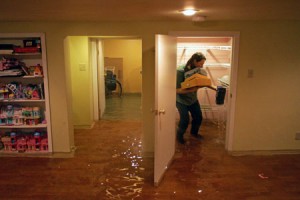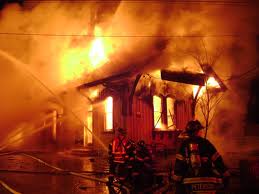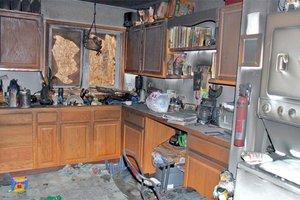McKinney Roofing – Wind Damage, Part 3
McKinney Roofing – Wind Damage, Part 3
by Kenton Shepard and Nick Gromicko
HOW WIND CREATES DAMAGE
One of the destructive forces created by wind is uplift, which is the tendency of materials to be lifted into a wind-created vacuum. Uplift can be created by either of two physical conditions: loss of laminar flow, or increased wind speed. Both of these processes reduce the air pressure immediately above the roof-covering material.
Laminar Flow
Air flowing close to a surface is in a state called “laminar flow.” According to the laws of physics, flowing air will try to maintain contact with a surface. When that surface bends or curves sharply, the air flow can’t turn quickly enough to maintain contact, and it separates from the surface. We say that it “loses laminar flow.” This creates a vacuum, and anything that can move will be lifted up into that vacuum, if the vacuum is strong enough.
The other process that creates uplift is related to the fact that increasing wind speed lowers air pressure. Wind speed on the roof can be up to 2½ times the approach speed, which is the speed of the wind as it blows toward the home. Reduced air pressure from fast-moving air just above the surface of the roof also increases the amount of uplift.
Damage Location
Uplift can develop when wind blows across a roof.
The location of damage on a home will be affected by the orientation of the wind to the roof structure, and by the shape of the roof. In these illustrations, areas of uplift are shown in blue.
When wind blows perpendicular to the eaves and ridge, uplift is created along the upwind side of the lower roof slope and along the downwind side of the ridge.
When wind blows parallel to the eaves and ridge, uplift is created along the upwind rakes.
Wind blowing at the side of the building was deflected up and over the low-slope section, creating an area of strong uplift, which sucked shingles and underlayment right off the roof.
If uplift can lift a portion of the roofing material, more of the surface of that material will be exposed for the wind to push against, and it will be more easily displaced or blown off the roof.
Uplift is strongest at areas of the home where the wind loses laminar flow. The areas most commonly affected include:
- upwind eave edges;
- upwind rakes;
- upwind corners; and
- the downwind side of ridges.
It’s at these areas that you’ll be looking most closely for wind-related damage.
In addition to uplift, areas which lose laminar flow also experience turbulence. This buffeting or fluttering effect can also loosen and displace roofing materials.
Positive Pressure
Positive air pressure is really just the wind pushing against something that offers resistance, such as a shingle tab that’s been raised by uplift, and flashing that protrudes enough for wind to push against it. Eaves and rakes are areas where roofing materials terminate, so they are especially vulnerable to damage from wind pressure.
Inflation
Wind inflation is similar to what happens when you blow up a balloon. It’s a result of positive air pressure. An extreme example of inflation is when wind blowing at the gable side of a home enters the space between the underlayment and roof-covering material. By inflating this space, wind can create damage by breaking the bonds of asphalt shingles.
In this photo, you can see the results of all three factors. The left side of the structure was the downwind side, and you can see that roofing materials were lifted into the vacuum created by loss of laminar flow.
The far-left corner had roof sheathing removed by a combination of uplift due to loss of laminar flow and inflation.
No need to struggle deciding which repairs you will make to your McKinney Roofing Damage- you have enough to think about. Your insurance will cover the cost of your McKinney roofing repairs. We are the McKinney roofing company that knows the complete ins and outs of what needs to be done to completely take care of your McKinney roofing repair At Go Go Green Roofing and Solar we will take care of the whole insurance process for you. Call us today at (682) 325-2682 for your free evaluation









